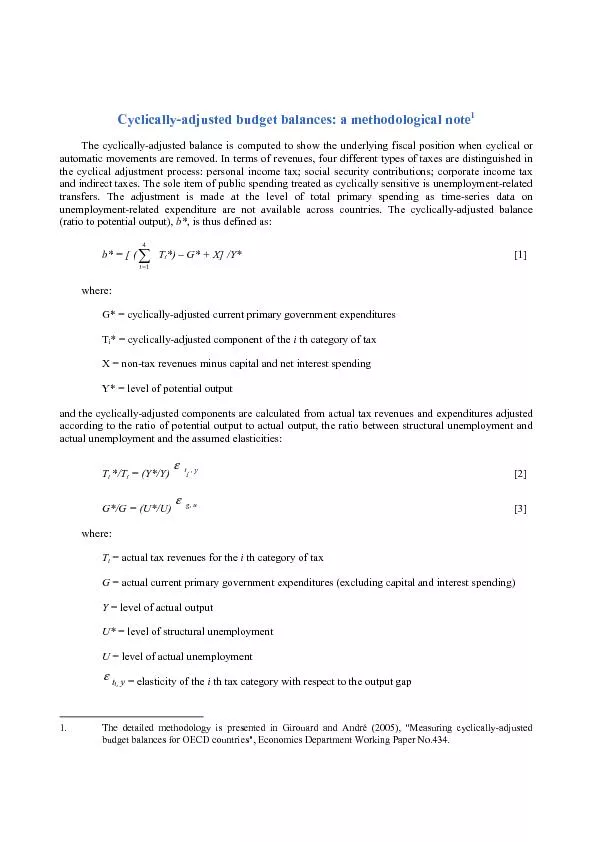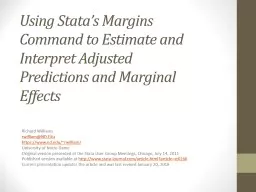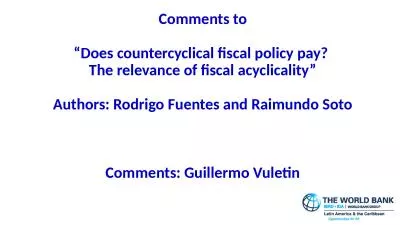PDF-Cyclically-adjusted budget balances: a methodological noteThe cyclical
Author : test | Published Date : 2016-03-10
elasticity of the th tax category with respect to the output gap g u elasticity of current primary government expenditure with respect to the ratio of structural
Presentation Embed Code
Download Presentation
Download Presentation The PPT/PDF document "Cyclically-adjusted budget balances: a m..." is the property of its rightful owner. Permission is granted to download and print the materials on this website for personal, non-commercial use only, and to display it on your personal computer provided you do not modify the materials and that you retain all copyright notices contained in the materials. By downloading content from our website, you accept the terms of this agreement.
Cyclically-adjusted budget balances: a methodological noteThe cyclical: Transcript
Download Rules Of Document
"Cyclically-adjusted budget balances: a methodological noteThe cyclical"The content belongs to its owner. You may download and print it for personal use, without modification, and keep all copyright notices. By downloading, you agree to these terms.
Related Documents














